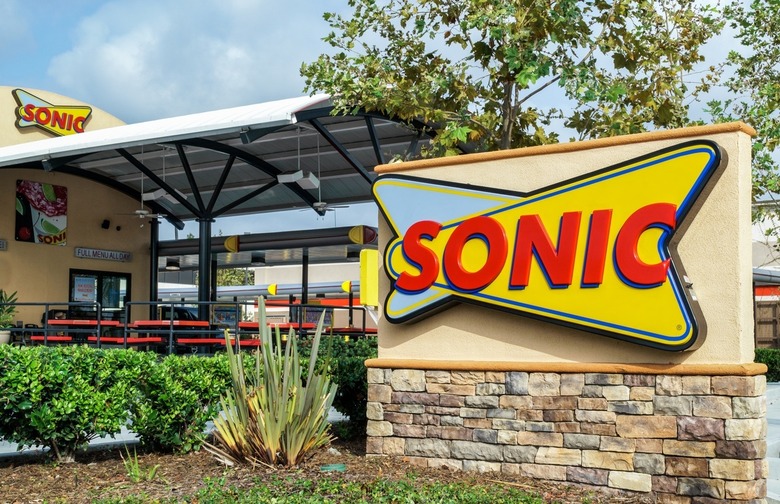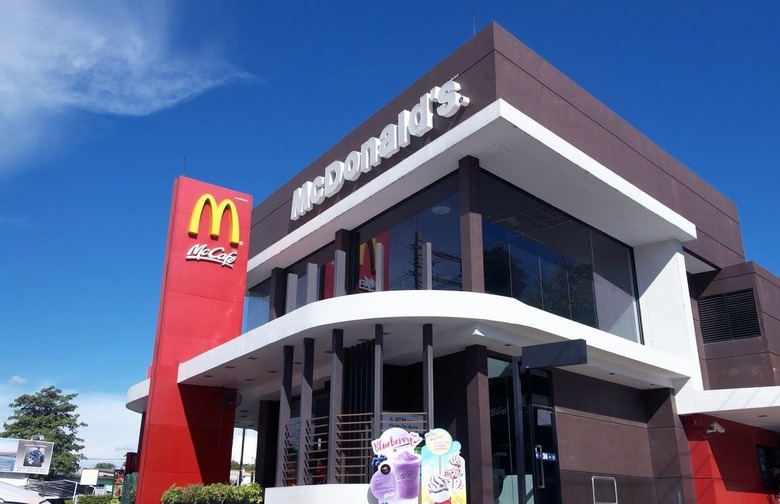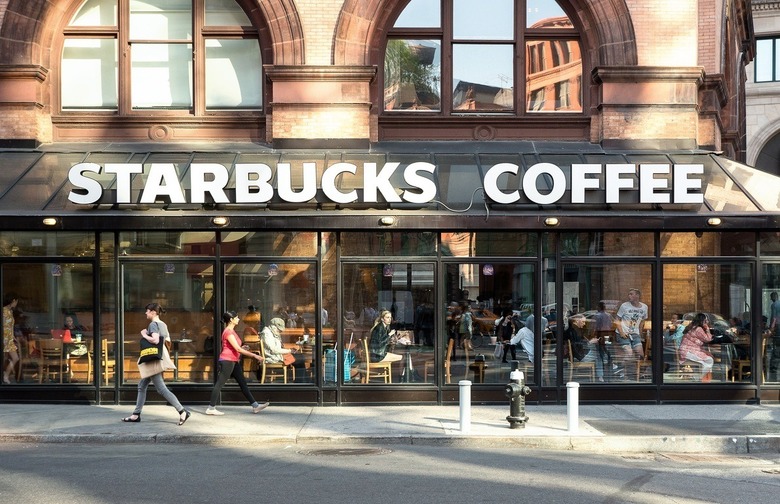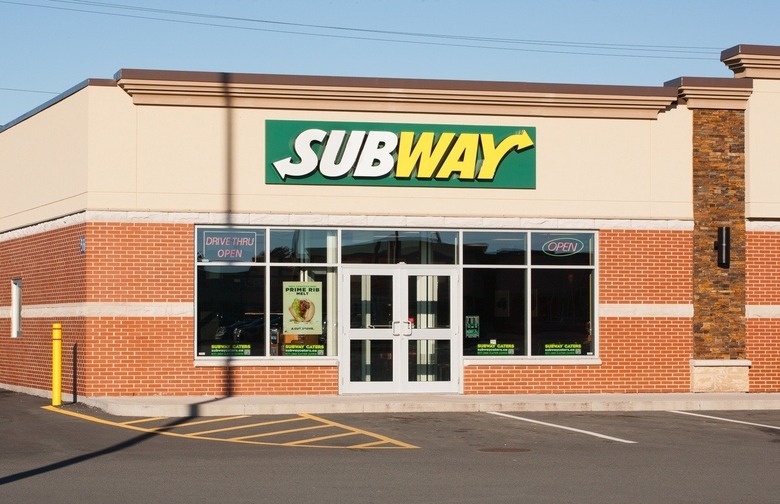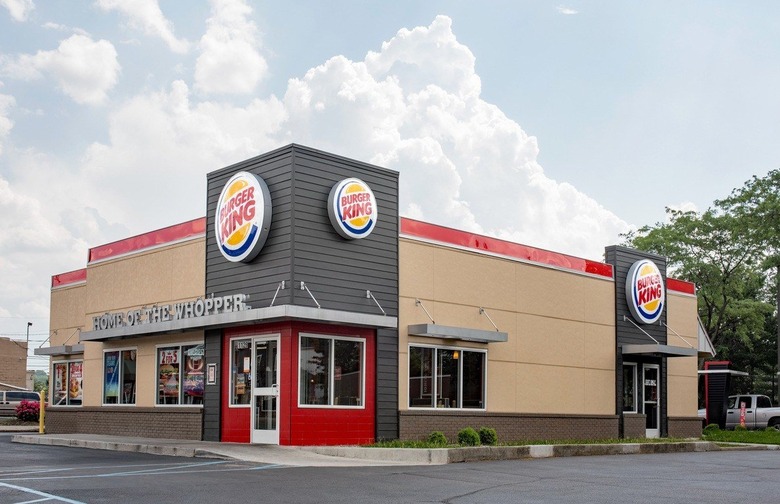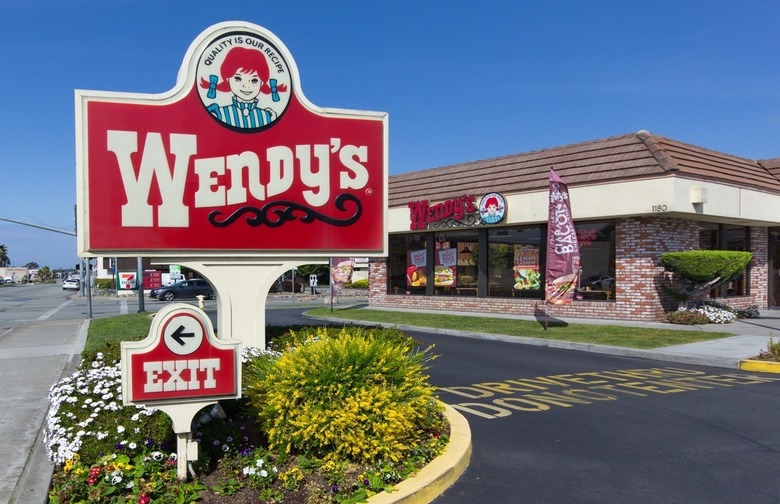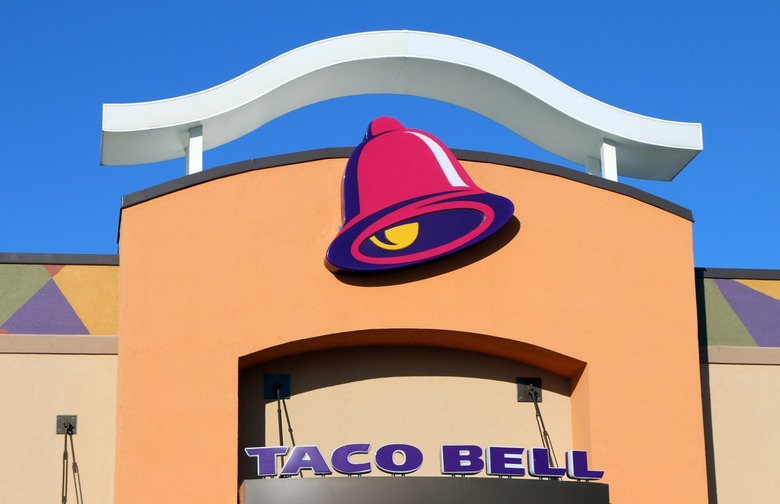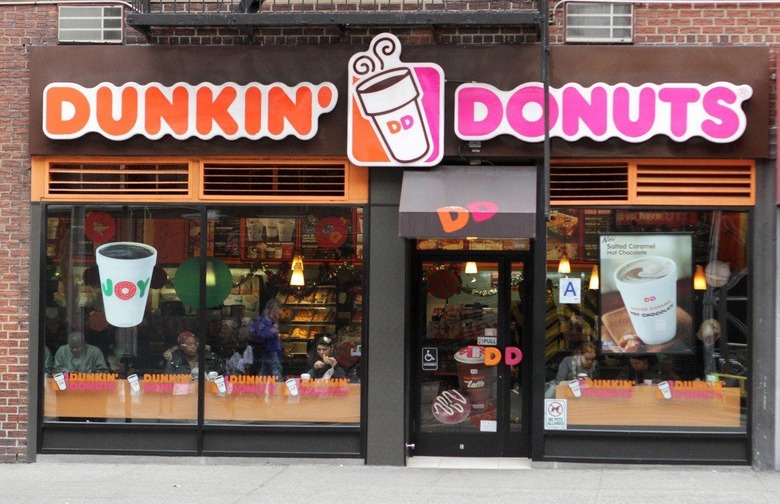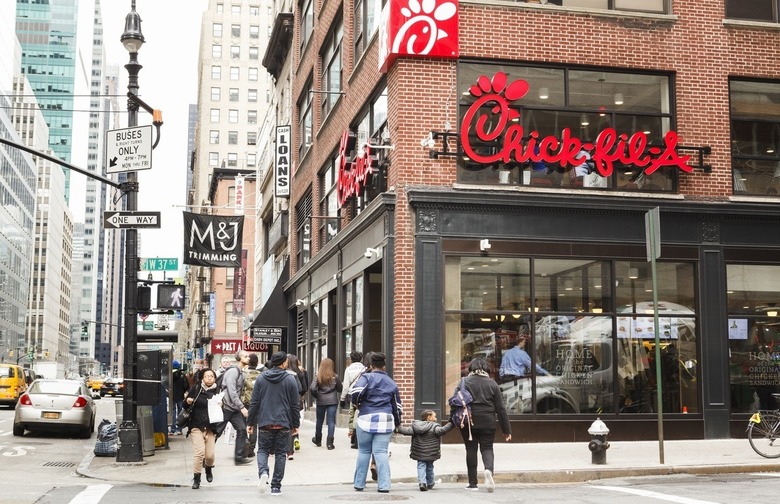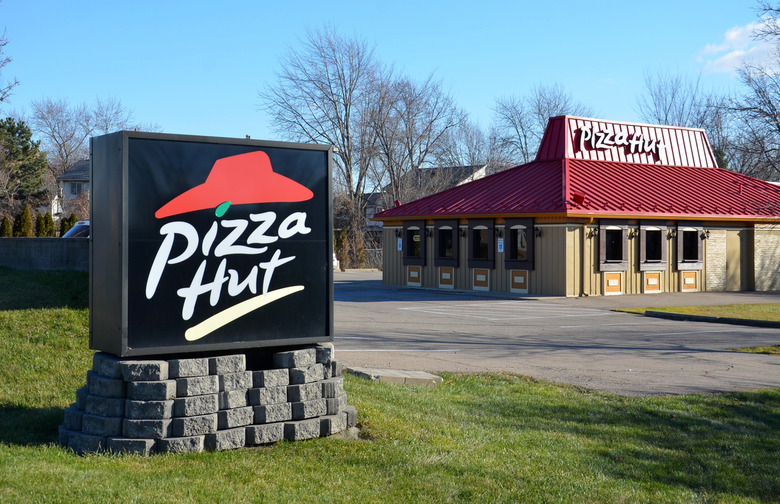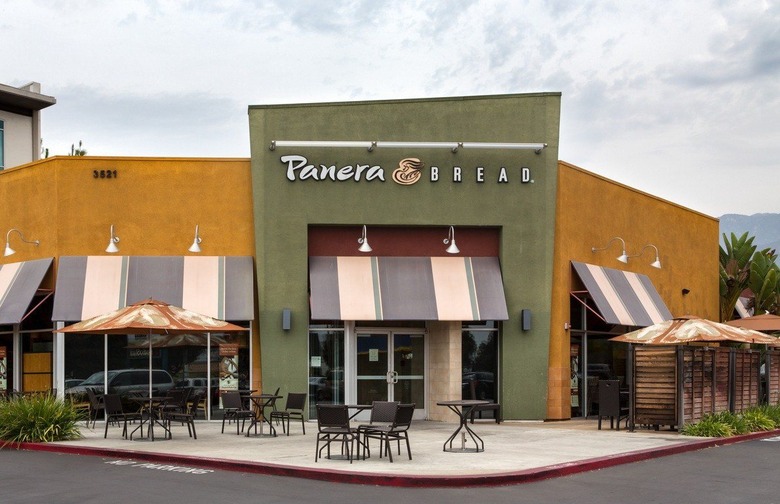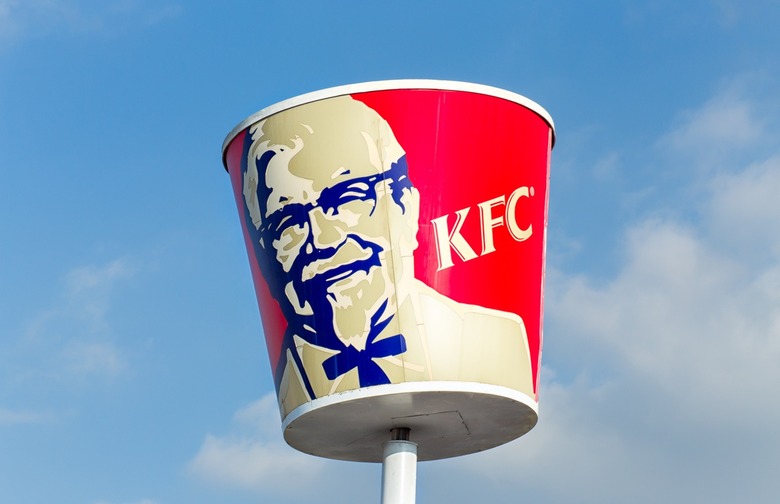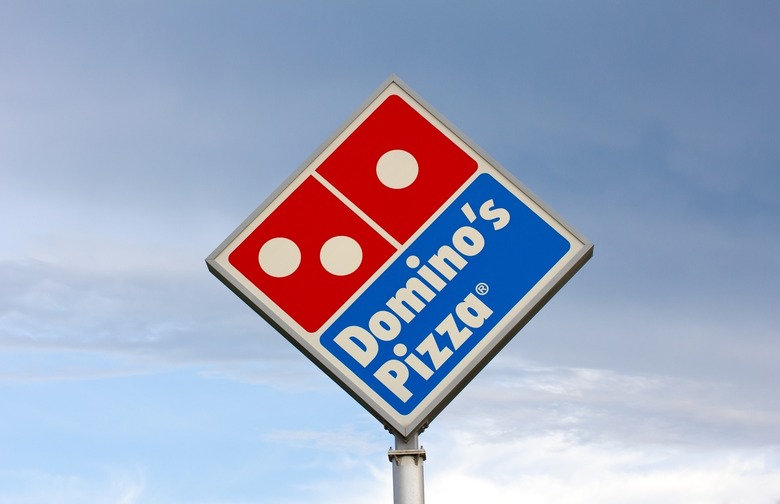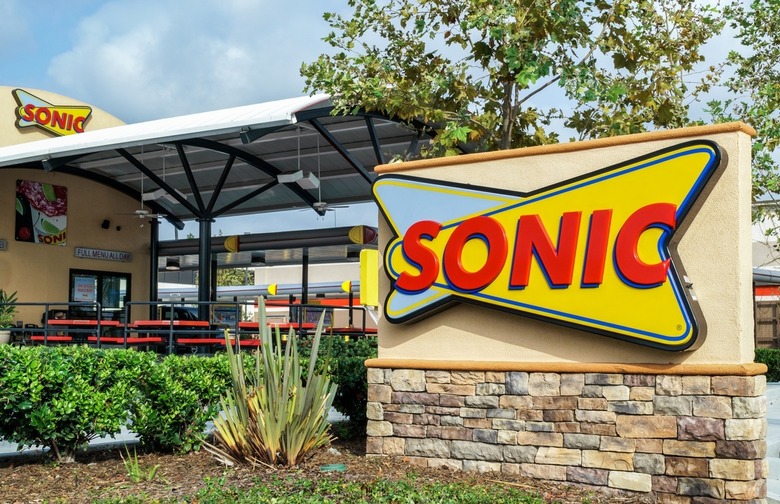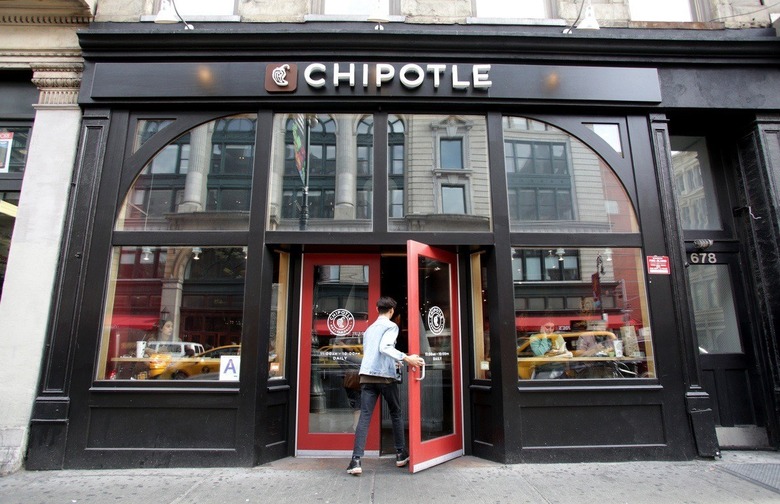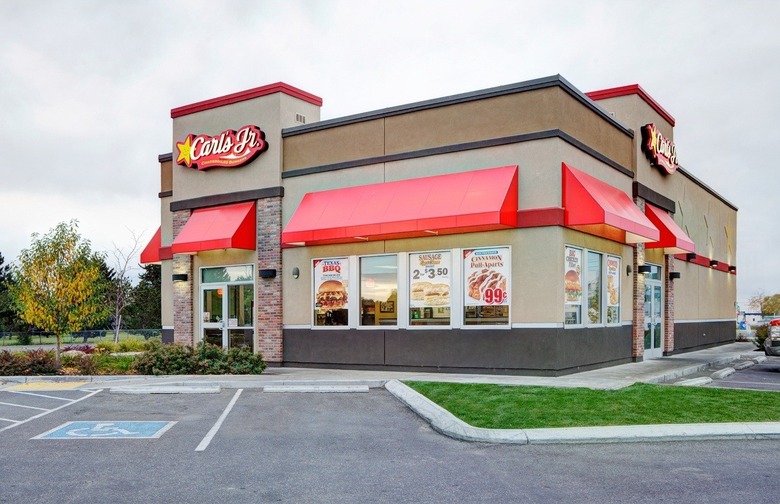The Fascinating Origins Of The 15 Biggest Fast-Food Chains
Starting a company is no easy feat, and opening a restaurant is one of the most challenging endeavors of all. Though it may be hard to believe, the biggest fast-food chains in the country all started out at one solitary location, and each one has its own fascinating backstory.
McDonald’s
Back in 1940, brothers Mac and Dick McDonald took over their father's 3-year-old restaurant in Monrovia, California,, which had a 25-item menu, and moved the entire building 40 miles east to San Bernardino. Eight years later, realizing that burgers were the top seller, they streamlined the menu and the entire process: the menu was whittled down to hamburgers, cheeseburgers, fries, shakes, soft drinks, and apple pie; everything was self-service, and the kitchen was run like an assembly line, revolutionary for the time.
Four years later, they decided that a new building was necessary to keep the profits rolling in. With their eye on maximum efficiency and profit potential, the brothers hired a well-known architect and mapped out every inch of what the new restaurant should look like: Red and white ceramic tile, stainless steel, glass, pulsing neon, and — the icing on the cake — two massive arches trimmed in yellow neon that they referred to simply as "the golden arches." They began selling franchise rights while still in the design phase. (It's worth noting here that while the McDonald brothers have gone down in history as rather simple-minded restaurant owners, they were in fact way ahead of their time and laid the blueprints for the chain we know today.)
In 1954, milkshake machine salesman Ray Kroc entered the picture. He noticed that the McDonalds had purchased eight of his mixers for their restaurant and was blown away by what he saw when he paid them a visit. He convinced the brothers to sell the company to him and immediately undertook a national expansion plan. There were 34 restaurants in 1959, and by the following year, there were 102.
Starbucks
Starbucks was founded in 1971 by three friends who met at the University of San Francisco, and the first location in Seattle only sold whole roasted coffee beans, not brewed coffee. The company grew in popularity over the next several years, introducing brewed coffee and espresso, and by the time former employee Howard Schultz bought it in 1987, there were already six locations. Schultz implemented a rapid expansion program, and when the company went public in 1992, there were 140 outlets, with revenues of $73.5 million (as opposed to $1.3 million in 1987). In 2014, total revenues were $16.45 billion.
Subway
Though today it's the world's largest restaurant operator, Subway began as a single, humble sandwich shop, opened in 1965 by 17-year-old Fred DeLuca and family friend Peter Buck in Bridgeport, Connecticut. Called Pete's Super Submarines, it was renamed Subway in 1968, and as the founders built out their franchise plan they created a parent company called Doctor's Associates Inc. (this odd moniker apparently came about because Buck had a doctorate in physics and DeLuca was hoping to go to medical school).
Burger King
Burger King's first incarnation was founded in Jacksonville, Florida, in 1953, after a man named Keith Kramer and his wife's uncle, Matthew Burns, visited a little burger shop in San Bernardino called McDonald's that turned out burgers, fries, and shakes in record time. They purchased the rights to a newfangled broiler that could cook 12 patties simultaneously and opened a burger shop of their own. The name of that magical broiler was called the Insta-Broiler, and the chain was originally called Insta-Burger King. The "Insta" prefix was removed after the company failed in 1959 and was purchased by its Miami franchisees, James McLamore and David R. Edgerton, who expanded to 250 locations by 1967, when the company was sold to Pillsbury.
Wendy’s
The story of Wendy's begins with its legendary founder, Dave Thomas. Thomas began working in restaurants at age 12, and after serving in the Korean War he became head chef at a Fort Wayne, Indiana, restaurant called Hobby House, which soon converted into a KFC franchise at the insistence of Colonel Harland Sanders himself. Thomas and Sanders became friends, and in the mid-1960s, Thomas was sent by the Fort Wayne franchise's owners to turn around four failing KFCs that they owned in Columbus, Ohio.
By 1968, those locations were doing so well that he was able to sell his shares in them back to Sanders for more than $1.5 million. He used the cash to open a restaurant of his own, specializing in burgers, which he christened in honor his 8-year-old daughter Melinda Lou, who was nicknamed Wenda, giving it the slightly more common name of Wendy's. The first location opened in Columbus on Nov. 15, 1969.
Taco Bell
The story of Taco Bell begins with a man named Bell: Glen Bell, to be exact, who opened a hot dog stand called Bell's Drive-In in San Bernardino, California, in 1946, at age 23. Four years later he opened a hamburger stand called Bell's Hamburgers and Hot Dogs in a Latino neighborhood in San Bernardino, and noticed that a Mexican restaurant across the street called Mitla Cafe attracted long lines for its hard-shelled tacos.
Over the next two years, Bell dined there frequently, attempting to reverse-engineer the hard-shell taco recipe. Eventually, he became good enough friends with the owners that they showed him how they were made. By early 1952, he had opened up a taco stand of his own, which he dubbed Taco-Tia.
The restaurant took off, and over the next few years, Bell bought several more taco stands, including four called El Taco. In 1962, he sold off his existing restaurants and opened the very first Taco Bell in Downey, California, with a franchise plan. Within two years, he'd sold his first franchise, and by 1967, 100 Taco Bells were in business.
Dunkin’ Donuts
William Rosenberg opened his first restaurant in Quincy, Massachusetts, in 1948, called Open Kettle. The following year the name was changed to Kettle Donuts, and in 1950, he finally settled upon Dunkin' Donuts. The inspiration behind the restaurant, which served only doughnuts and high-quality coffee, was Rosenberg's experience as a food seller at construction sites and factories, where he noticed that doughnuts and coffee were far and away the top sellers.
Dunkin' Donuts was an immediate success, and it took only five years before others expressed an interest in franchising.
Chick-fil-A
The story of Chick-fil-A began in 1946, when founder S. Truett Cathy, who passed away at age 93 in November 2014, opened a restaurant in the Atlanta suburbs called Dwarf House (11 Dwarf Houses, now called Chick-fil-A Dwarf House, are still in operation in the Metro Atlanta area). Several years later, Cathy purchased a pressure fryer that he discovered could fry up a piece of chicken for a sandwich in the same amount of time it took to cook a burger, and the proverbial light bulb went off. He trademarked the name Chick-fil-A, and in 1967, his first unit, specializing in chicken sandwiches and not offering any beef products, opened in the food court of Atlanta's Greenbriar Mall.
Pizza Hut
Pizza Hut's beginnings were about as humble as you can imagine. College-age brothers Dan and Frank Carney borrowed $600 from their mother and opened a pizza restaurant near Wichita State University on May 31, 1958, at the suggestion of a local real estate agent who was looking to rent out a former bar and convinced them that pizza would be a good concept. Neither brother had any restaurant experience, but they quickly got the hang of it. Business was soon booming. The first franchise opened in Topeka in 1959, and a later franchise in Aggieville, Kansas, became one of the first fast-food restaurants to offer delivery, revolutionizing the industry and leading to even greater success, with 4,000 outlets in operation across the country by the time the Carney brothers sold the business to PepsiCo in 1977. They're both still alive (and very wealthy); Frank Carney is, ironically, a major Papa John's franchisee today.
Panera Bread
Panera has one of the more interesting corporate histories of any company out there, but it's a little complicated. In 1993, Au Bon Pain (which was founded in 1981 by Ron Shaich) purchased The St. Louis Bread Company, which ran 20 bakery-cafes in the St. Louis area. These shops were so successful that in 1999, Shaich decided to do something drastic: He sold off Au Bon Pain and devoted all his resources to The St. Louis Bread Company, which he renamed Panera Bread. He remains CEO of the company to this day. So, yes, Panera was so successful in its early days that its parent company sold itself off to devote all its resources toward it.
KFC
The story of KFC begins, of course, with Harland Sanders, and his is truly a rags-to-riches story. After a rocky childhood in Henryville, Indiana, near the Kentucky border, he left home at age 13 and worked lots of jobs, with mixed success, before taking over a Shell filling station in small-town Kentucky in 1930, at the age of 40. His cooking (which he served to travelers at his own dining room table) was such a success that he expanded to a larger location across the street. By 1937, his operation had expanded to 142 seats and a motel, which he named Sanders Court & Café.
Sanders became a bit of a local celebrity when the governor bestowed upon him the honorary title of Kentucky Colonel — Sanders took the honor very seriously and even dressed the part. After a newly constructed highway hurt his business, Sanders sold all his properties and began selling his fried chicken recipe to restaurants, allowing them to use his name and likeness for promotion. The name Kentucky Fried Chicken was soon adopted by all the restaurants that sold the product, and by 1963, they had turned into the largest fast-food chain in the country.
Domino’s
Domino's Pizza was founded in 1960 in Ypsilanti, Michigan, near Eastern Michigan University, by brothers Tom and James Monaghan. The duo paid $1,400 to purchase an existing pizzeria called DomiNick's, and eight months later Tom took full-time control of the business because James didn't want to quit his job as a mailman (a decision he most likely came to regret). Tom spent the next few years growing the business, opening two more locations nearby by 1965. The secret to the company's early success was a new type of insulated pizza box Tom invented that could be stacked without being crushed. The original DomiNick's owner refused to allow Monaghan to use the name at the new locations, however, so he changed it slightly, based on an employee's suggestion, to Domino's. The first franchise was sold in 1967, and by 1978, there were 200 locations.
Sonic Drive-In
After coming home from World War II, Sonic founder Troy Smith found work as a milkman, but later switched to delivering bread because loaves of bread were lighter than bottles of milk. He used the money he saved to buy a diner in Shawnee, Oklahoma, called Cottage Café. In 1953, Smith sold the café to purchase a walk-up root beer stand called the Top Hat that had an adjacent log house. He kept the root beer stand as-is and converted the log cabin in into a steakhouse, thinking that it would bring in more profits than root beer. But selling root beer, burgers, and hot dogs from the root beer stand ended up earning him a lot more money, so he shut the steakhouse down.
Customers could originally park anywhere they wanted and walk up to the root beer stand to place their orders, but after visiting a Louisiana drive-in where customers ordered via intercom and food was delivered via carhops, Smith had the "light bulb moment." He hired some jukebox repairmen (so '50s!) to install intercom wiring in the parking lot, and sales immediately tripled. The novel concept soon caught the eye of an entrepreneur named Charles Pappe, who negotiated the first franchise location in 1956. In 1959, the name was changed to Sonic.
Chipotle
Chipotle was founded by Steve Ells, a Culinary Institute of America graduate, in 1993. He'd been inspired by the popular tacos and burritos he discovered in San Francisco's Mission District while working there for chef Jeremiah Tower, and after securing an $85,000 loan from his mother, he opened the first Chipotle in a former ice cream shop near the University of Denver campus.
Ells estimated that he'd need to sell about 100 burritos per day to be profitable, but after a month in business, he was selling more than 1,000. Knowing he had a good thing on his hands and fueled by an investment from his father and a Small Business Administration loan, he jettisoned his original idea of opening a fine-dining restaurant and focused on expansion, opening a second store in 1995, and a third shortly thereafter. And the rest is history.
Carl’s Jr./Hardee’s
Hardee's and Carl's Jr. are indeed two completely different chains that have had the same parent company, CKE Restaurants, since 1997.
Hardee's was founded by a man named Wilber Hardee in Greenville, North Carolina, in 1960. Hardee may have been a good businessman, but he was also a bit of a gambler. In 1961, after a successful year of business, he brought on two entrepreneurs named James Carson Gardner and Leonard Rawls to help expand the restaurant. After opening a second successful outpost, Hardee lost his controlling share in the company to the duo in a game of poker, and decided to then sell his remaining shares to them outright. The chain rapidly expanded and went public in 1963; Gardner left when he was elected to the U.S. House of Representatives in 1966.
As for Carl's Jr., it got its start as a Los Angeles hot dog cart in 1941, founded by a 24-year-old bread truck driver named Carl Karcher and his wife, Margaret, which expanded to five full-service barbecue restaurants named Carl's Drive-In Barbeque. In 1956, Karcher opened two smaller burger-focused spinoffs in Anaheim and Brea, California, which he called Carl's Jr.
Both chains found their fair share of success, with Hardee's becoming a fixture in the South and Midwest and Carl's Jr. becoming a familiar sight in the West. By the mid-'90s Hardee's was the country's fourth-largest fast-food chain with 2,500 locations (a strategy to open in smaller towns not serviced by McDonald's or Burger King paid off), and Carl's Jr.'s parent company, CKE Restaurants (short for Carl Karcher Enterprises), jumped at the opportunity to purchase it and expand its presence to the East. CKE purchased Hardee's in 1997 for $327 million.
